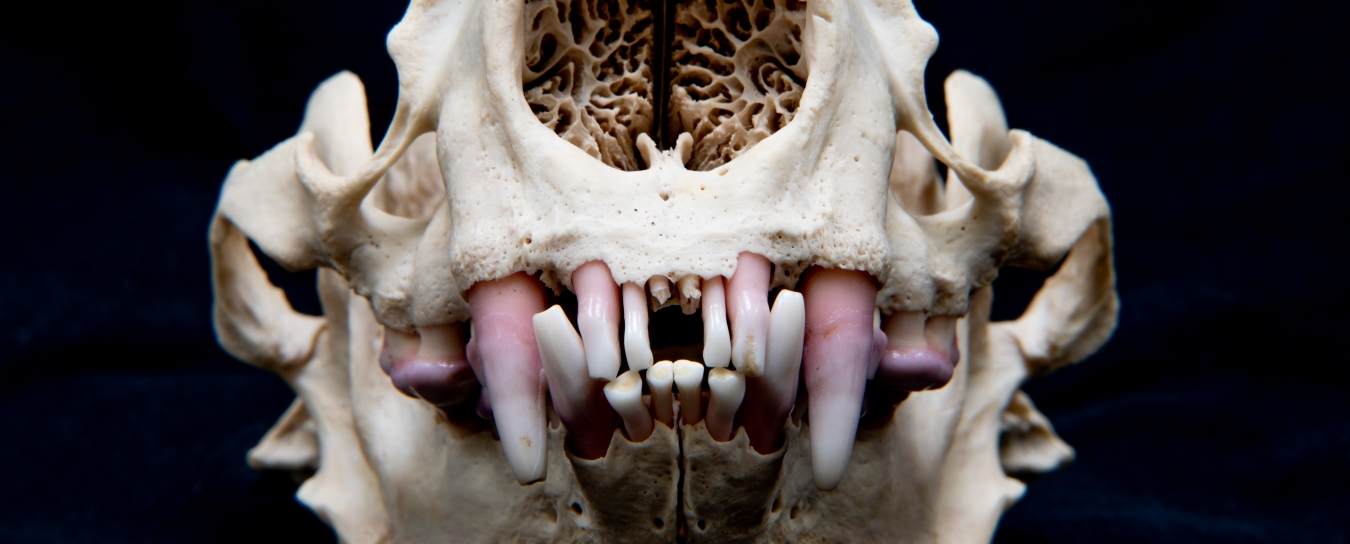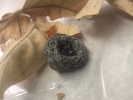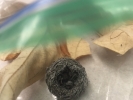
Vertebrates
Browse our Q&A about birds, eggs, nests, amphibians, reptiles, and mammals of the Central Coast and Channel Islands.
- Anthropology
- Rocks & Fossils
- Invertebrates
- Vertebrates
- Botany
- Astronomy
- Fungi
- General
- Recently Asked
Tiny Nest
Hello,
My work colleague found what appears to be a very tiny nest. I have attached 2 photos. Can you tell us what sort of creature built such a nest? And is the museum interested in taking the nest for your collection?
Thank you.


Curator Response
Hi Suzanne,
Thank you for sharing your bird nest photo with us! It’s a hummingbird nest, likely from an Anna’s Hummingbird. It looks weathered because it’s missing the lichen and spiderwebs you’d typically see woven around the outside, as well as the plant down lining you’d see inside a fresh nest. Yep, “plant down” is a real thing, in fact, you can see some of it on the sycamore leaves in your photo. One of our native hummingbirds—the Black-chinned Hummingbird—makes heavy use of down from the fuzzy underside of sycamore leaves on its nest. These materials provide insulation and camouflage.
Please thank your colleague for offering the nest to us, but we must decline. Because it’s missing the inner and outer components, this particular nest is of limited scientific value. The best thing to do would be to return it to where it was found (although your colleague may first want to take a photo with something in it for scale). If your colleague doesn’t already know about the Migratory Bird Treaty Act, please share the fact that it’s actually forbidden for individuals to possess the nests, eggs, feathers, or other body parts of more than 800 birds found in North America (including almost every common wild bird found in the U.S.). So it’s better to be on the safe side and leave bird things where we find them. We realize this is a disappointment for amateur naturalists, but the reasoning behind the protections is sound. Many birds—including hummingbirds, who sometimes build a new layer on top of an old nest with each season—will actually reuse nests, so removing nests makes it harder for birds to find homes. Even a nest that has fallen from a tree is useful, as parts of it may be scavenged to help build other nests.
If you want to learn more about birds and nests, the Cornell Lab of Ornithology is an amazing resource. We highly recommend their site, allaboutbirds.org, as well as their list of “Myths and Frequently Asked Questions about Nests”:
If you send them a photo of a bird nest in a funny or interesting place, you can even win a prize.
So keep those nest photos coming! But follow the leave-no-trace ethos: leave only footprints, take only photographs.
Paul Collins, Curator of Vertebrate Zoology
Christine Melvin, Naturalist
Rebecca Fagan Coulter, Volunteer Manager (and birder extraordinaire)
Suzanne response:
Thank you all for your response. We thought it may be a hummingbird's nest. The nest was found on the ground on a walkway, in fact my colleague said she almost stepped on it! It is understood that nests/habitats are not to be disturbed.

